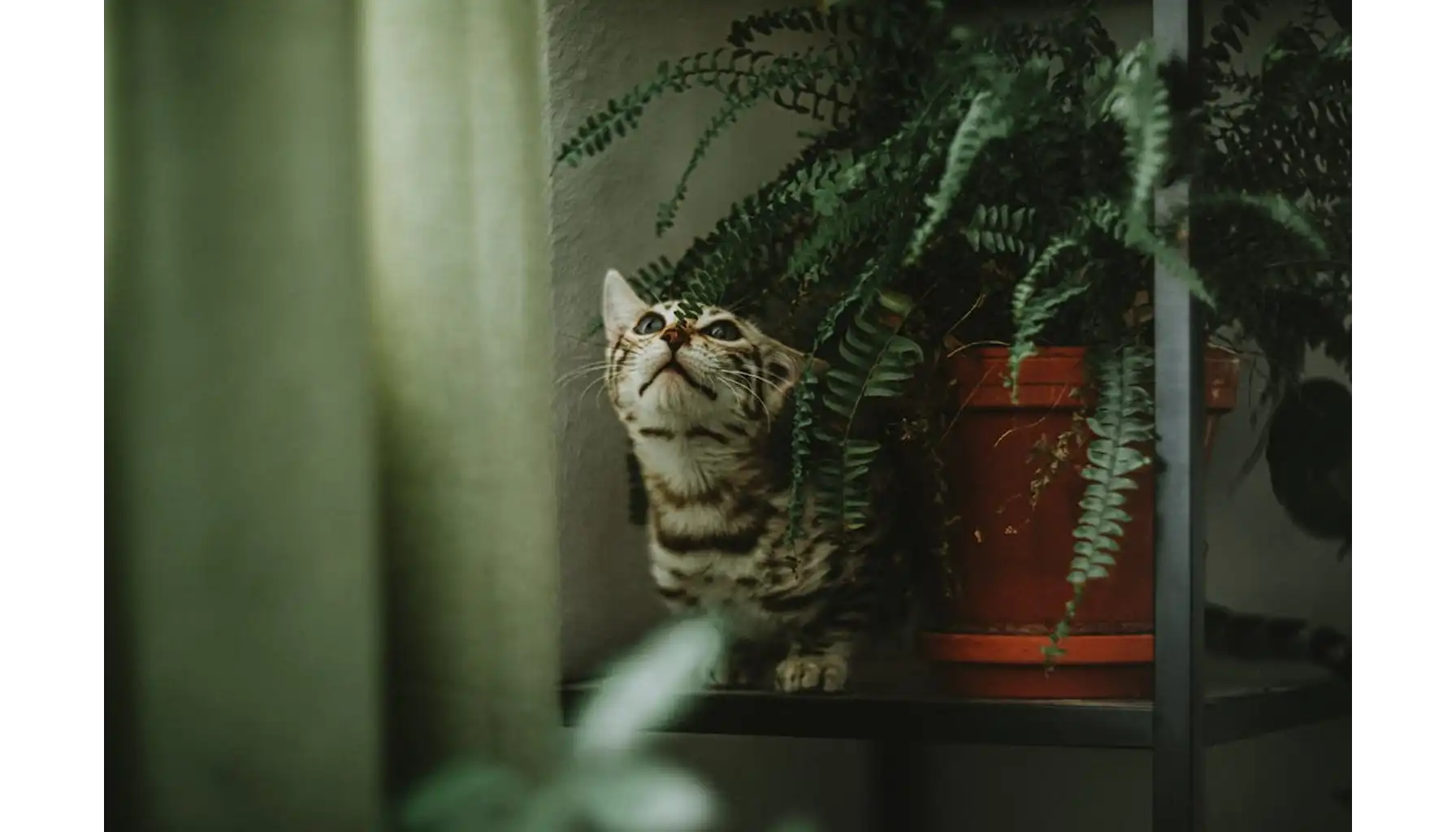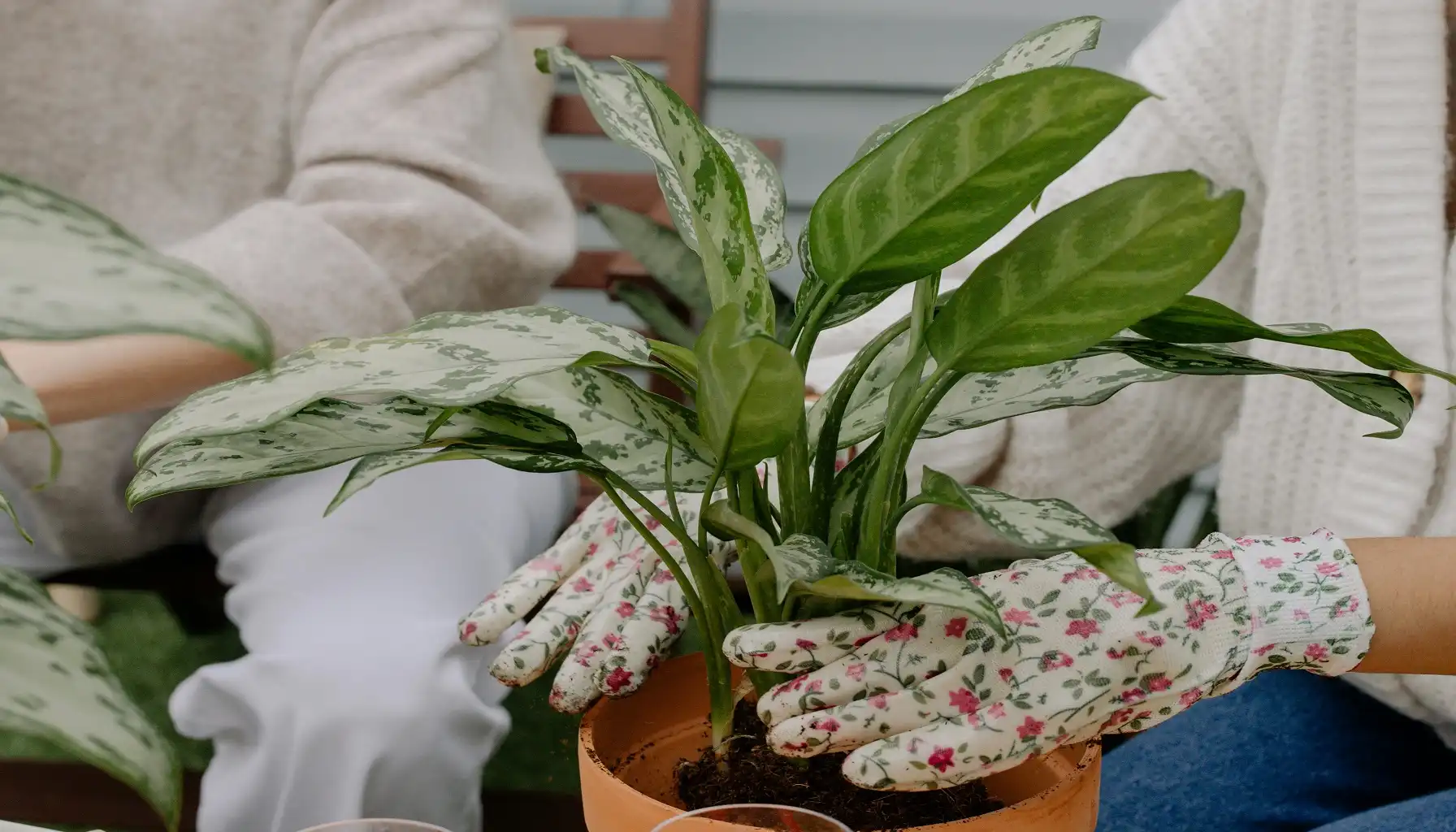The Boston fern hanging plant has something to offer both for beginners and advanced gardeners. Learn how to care for it, and your interior or garden will be granted with its true charm and vivid greenery, just as from a good old fairytale.
But how to treat it right and where to find the right place for it? No worries, this guide will show you what is the plant a Sword fern in general and explain everything you need to know for growing a fantastic companion.
Why Plant Boston Fern?
Feature | Boston Fern Plant Benefits |
Air-Purifying | Naturally filters toxins like formaldehyde and xylene from the air |
Pet-Friendly | Safe for homes with cats and dogs (non-toxic to pets) |
Aesthetic Appeal | Lush, arching fronds ideal for hanging baskets, shelves, and plant stands |
Versatility | Thrives both indoors and in shaded outdoor spaces |
Low Maintenance | With proper routine, it’s resilient and forgiving |
Indoor Sword Fern Plant Care
Sword fern live plant is particularly popular in homes and offices because it brings softness, life, and solid air purification to spaces while requiring relatively straightforward upkeep. However, they do have specific needs—especially around humidity and watering—that must be met to keep them thriving.
Light: Keep it Bright, But Indirect
Boston fern plant indoor flourishes in bright, filtered light. They mimic their natural forest floor habitat best when placed near:
East-facing windows, where they can enjoy gentle morning sun
Bathrooms with steamy conditions and soft natural light
Living rooms with sheer curtains that diffuse sunlight
Avoid: Direct afternoon sun, which can easily scorch the delicate fronds.
Boston fern house plant tip: Use the Light Meter at AI Plant Finder to evaluate spots in your home or garden before moving your small Boston fern plant—especially during seasonal transitions.
Watering and Humidity: The Non-Negotiables
Watering is where most caregivers stumble. Proper Boston fern indoor plant care means consistency—but not excess.
Watering tips:
Water when the top inch of soil feels slightly dry to the touch.
Use lukewarm, filtered water when possible to avoid shock or buildup.
Never let the plant sit in soggy soil—ensure proper drainage.
Humidity tips:
Humidity Method | Effectiveness | Notes |
Pebble tray with water | Moderate | Place under pot; water should not touch roots |
Daily misting | Light & temporary | Best when paired with other methods |
Room humidifier | High | Ideal for dry climates or heated interiors |
Plant clustering | Moderate | Creates a shared humidity microclimate |
Target humidity: Between 50% and 80%. If your fronds develop brown tips or edges, it's likely due to insufficient humidity. To avoid guessing, just download a Boston fern indoor plant photo in the AI Plant Finder and see what changes it needs in its watering schedule.
Temperature: Keep It Mild
Boston fern type of plant thrives in moderate temperatures. Here’s the optimal range:
Keep them away from heat vents, radiators, cold drafts, and air conditioning units.
Fertilizing: Light but Regular Feeding
Feed your Boston fern bathroom plant every 4–6 weeks during the spring and summer months using a diluted liquid houseplant fertilizer (at half strength). This helps maintain rich green foliage and supports active growth. In fall and winter, pause fertilization to let the plant rest. And don’t forget to add your Boston fern plant photo to the AI Plant Finder’s ‘My Garden’ to track its health through seasons.
Pruning: Encourage New Growth
Regularly snip off any yellow, brown, or damaged fronds at the base of the Boston fern plant stand using sterile scissors. This:
Boosts airflow and light penetration to the inner fronds
Encourages healthy, new foliage
Prevents fungal buildup from decaying leaves
Makes the Boston fern nephrolepis exaltata indoor plant image green and lush
Common Indoor Issues and Fixes
Problem | Likely Cause | Solution |
Browning tips | Low humidity or irregular watering | Boost humidity, adjust watering schedule |
Yellow leaves | Overwatering or poor drainage | Let soil dry slightly; repot with better drainage |
Pests (mites, scale) | Dry conditions or plant stress | Use neem oil or insecticidal soap; increase humidity |
Extra tip: Now you know is a Boston fern an indoor plant, and it's time to pick a best spot for it in your home!
Outdoor Sword Fern Care
While the Boston fern indoor plant image is more common, you might still wonder ‘can you plant a boston fern in the ground?’ Absolutely yes!
To achieve that, learn how to protect them from excessive sun, pests, and seasonal threats. Their cascading, sword-like fronds make them perfect for shady patios, covered porches, or nestled beneath trees. If you’ve mastered indoor fern care, you don’t even have to decide on Boston fern indoor or outdoor plant. It can yield even lusher results during the right time of the year!
Placement: Shade Is Your Best Friend
Fern Boston plant is woodland native, so they naturally gravitate toward cool, dappled light. Outdoors, the safest placement is:
Partial to full shade, such as under trees or pergolas
North- or east-facing porches where they avoid scorching midday rays
Hanging baskets under overhangs or covered patios
Tolerated: A bit of gentle morning sun
Avoided: Harsh afternoon sun, which quickly dries out soil and burns foliage.
Pro tip: Use a plant stand for boston fern to achieve that perfect safe position.
Watering: Keep It Moist, Not Mucky
Outdoor conditions—especially in hot or windy weather—can dry out soil fast. Sword ferns demand moisture, but not sogginess.
Best practices:
Daily watering may be necessary during summer for container ferns.
Check moisture depth with your finger or a soil moisture meter.
Use well-draining, organic-rich potting mix in containers to prevent root rot.
Ensure containers have drainage holes and never allow water to pool at the base.
Temperature Considerations: Avoid the Frost
While asking ‘is Boston fern an indoor plant’, you should only understand that they are not frost-hardy, and that is the main problem. Their ideal outdoor growing zones are USDA zones 9–11. If you're in a colder climate:
Bring potted ferns indoors before first frost—usually in early autumn.
Transition gradually by placing them in a shady, protected area for a few days before moving indoors.
Inspect for pests before the move to prevent bringing insects inside.
Feeding: Encourage Healthy Outdoor Growth
While ferns aren't heavy feeders, they do appreciate light, regular nourishment:
Feeding Schedule | Fertilizer Type | Signs You Need It |
Every 4–6 weeks | Diluted balanced liquid fertilizer (e.g., 10-10-10) | Pale fronds, slow growth |
Early spring boost | Slow-release granular fertilizer | For new outdoor plantings |
Apply fertilizer during the growing season only (spring through early fall), and avoid over-fertilizing, which can burn sensitive roots.
Outdoor Hazards and Solutions
Threat | Prevention/Treatment |
Slugs/snails | Use copper tape or slug bait; remove mulch from directly around stems |
Mealybugs/mites | Hose off foliage or use neem oil; inspect before bringing indoors |
Wind damage | Shelter plants behind barriers or in hanging baskets under cover |
Sudden cold | Move potted ferns indoors when temps drop below 50°F (10°C) |
How to Propagate Nephrolepis Exaltata Successfully
Ready to multiply your lush collection? Propagating indoor fern varieties and species is surprisingly easy and rewarding. The best method is division, done during repotting.
How to Divide a Stem Right Way:
Choose the Right Time: Early spring or summer is best, when the plant is actively growing.
Remove the Fern: Gently take it out of the pot and shake or rinse off excess soil.
Identify Natural Divisions: You’ll see clumps with separate crowns and roots—these can be split by hand or with a clean knife.
Repot Each Section: Use fresh, well-draining soil. Keep each division moist and in indirect light for a few weeks.
Within a month, your new plants should begin showing fresh fronds—proof that they’ve successfully established themselves.
Boston fern nephrolepis exaltata indoor plant photo may have old-world, sometimes simply retro charm, but caring for them doesn’t need to feel outdated. With consistent moisture, filtered light, and a watchful eye on temperature and pests, Boston fern plant images can cheer you up reliably for years.
And if you add modern technologies to your home garden care routine, it is much more expected to thrive with no extra effort.
Related AI Plant Finder Posts






